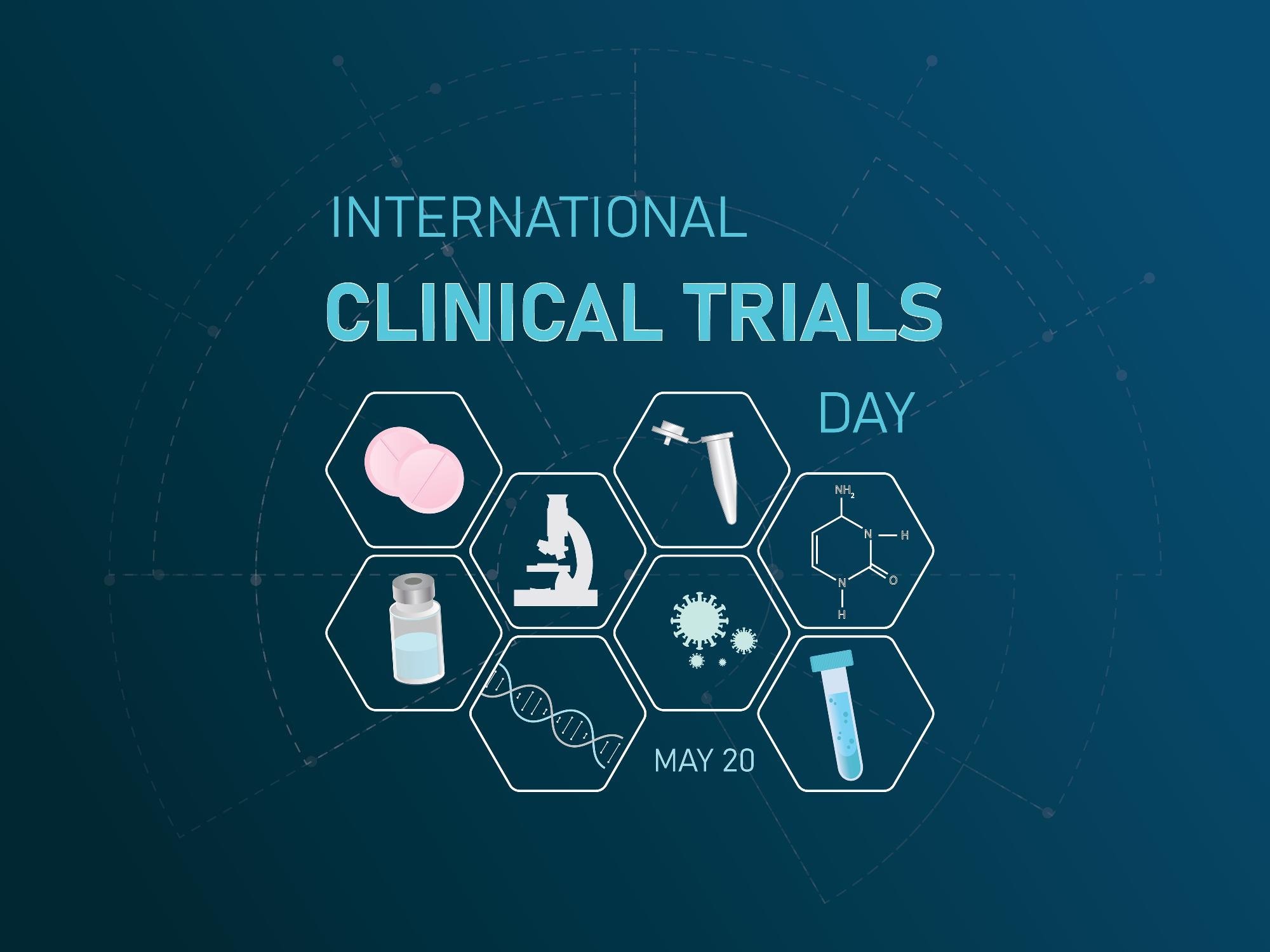Sponsored Content by TrialbeeReviewed by Ifeyinwan IsiborMay 23 2022
In this interview, we speak to Matt Walz, CEO of Trialbee, about the importance of improving patient recruitment and retention within clinical trials and what the future looks like for clinical research.
Please can you introduce yourself and tell us about your role at Trialbee?
My name is Matt Walz, and I've been the CEO of Trialbee since 2020. Essentially, we're a patient recruitment company offering software products that help to identify and enroll patients for clinical trials.
Our SaaS-based products aim to streamline the recruitment process from the moment a patient is identified, tracking data and offering real-time analytics to CROs and sponsors so that they can monitor the status of their enrollment process and inform their trial timelines. We also provide insights and technology to trial sites to better navigate their engagement with patients as well.
Trialbee aims to empower strategies, optimizing the enrollment of clinical trials. Can you tell us more about some of the missions and core values at Trialbee?
In the past few years, we've seen a lot of new technologies introduced to help coordinate and optimize clinical trials. Many of them are designed to help create better patient experiences, which has been a concern within the industry for quite some time now. These approaches are helping sponsors to open access to research for larger and broader groups of candidates and can be of great help in keeping patients engaged over the course of a study. This kind of emphasis on creating more patient-centric experiences and opening trial access to larger and often underrepresented groups drives Trialbee's work, as we recognize that the success of each clinical trial conducted depends on these factors.
We see ourselves as a product-oriented company that offers value by opening the door for greater diversity, streamlining recruitment, enrollment, and engagement processes, and improving patient outcomes. The continued success of these factors are all considered top priority, well above profitability.
MATCH & ENROLL RELEVANT PATIENTS FOR HIGH-QUALITY STUDY DATA
Despite clinical trials being essential for developing new therapies and treatments, they often have a low recruitment rate. Why is this, and what do you believe to be some of the biggest challenges clinical trials face?
Complications with recruitment and enrollment are some of the most significant factors that tend to impact the success of clinical trials. Aside from driving up costs and frustration for sponsors, recent reports have shown us that nearly 80% of trials fail to meet enrollment timelines and that approximately a third of all Phase III study terminations are a result of poor enrollment. These disappointing results can largely be attributed to the fact that study teams have traditionally had little to no control over recruitment, which helps to feed the widely-held industry belief that recruitment is inherently difficult and chaotic.
Many feel that lengthy recruitment periods and over-recruiting are unavoidable constants and that, in terms of enrollment diversity, you simply get what you get. These challenges can lead study leaders to feel helpless and overmatched.
One obstacle many people face in clinical trial recruitment is the diversity of participants. Having diverse data that is representative of a whole population ensures accurate results. How can people use real-world data (RWD) to boost diversity rates, and what should companies do to break down access barriers?
Leveraging RWD helps boost diversity rates by allowing researchers to identify and engage with more targeted patients for clinical trials, breaking down access barriers for underrepresented populations in the process. This is made possible due to sources such as targeted digital advertising, which offers insightful RWD on hard-to-reach populations that were previously unavailable to clinical researchers and therefore resulted in a lack of diversity within their trials.
RWD also helps identify harmful biases found in previous clinical trials that can educate researchers and allow them to avoid including them in current and future studies. All in all, by reaching desired patients faster and more efficiently, we also end up saving money since trial timelines and recruitment costs are effectively cut down.
Ensuring high volumes of participants as well as good experiences is vital for a successful clinical trial. How can companies work to improve patient recruitment for their trial, and what makes a positive experience for a participant?
For patients, having a positive experience in a clinical trial is largely dependent on the level of communication and trust they can share with sponsors and researchers. The pandemic and resulting shift towards decentralized clinical trials allowed the industry to tackle decades-long obstacles that have not only prevented potential patients from joining clinical trials but also led many recruited patients to become disengaged and ultimately fall out of a research trial. This can be attributed to a number of factors, including long stretches of distance between a patient's home and their research site and dealing with overwhelmed and understaffed research teams that are unable to spend an adequate amount of time with each patient.
Now, research teams can more easily cater to the needs of patients with the use of new technology and remote trial models. For example, virtual telehealth conferences give patients greater access to researchers for check-ins, reducing the often inconvenient need to travel long distances on a regular basis. These tools also keep patients informed and up to date with the status of a given trial, an important factor that helps to make patients feel more valued and allows for trust to build between them and their research team.

Image Credit: fizkes/Shutterstock.com
You currently offer two core products, the Trialbee Hive and the Trialbee Honey. Can you tell us more about these two products and their use in clinical trials?
Trialbee HIVE is a patient-recruitment solution that leverages the power of data science to deliver high-quality, study-ready patients. It aggregates disparate data silos and also employs advanced data science techniques such as look-alike modeling and scales reach by targeting the optimal channels for your clinical study.
Trialbee Honey is a single cloud-based platform for patients, sponsors, and sites purpose-built to provide transparency into patient qualification and enable convenient patient communication and engagement, making it an efficient solution for sites to engage highly qualified patients. Honey manages enrollment of all patients, regardless of the recruitment source, in a single, purpose-built solution. Since its inception, sponsors have used Honey to telescreen well over 500,000 patients at more than 250 research sites in over 20 countries
In recent years, one type of clinical trial that has seen increased attention is decentralized clinical trials. What are these, and how can they help to optimize the research trial process?
Decentralized clinical trials, or DCTs, attempt to improve access and participation for patients by cutting down on or eliminating the need to travel to study sites. DCTs take advantage of technologies such as patient apps, smartphones, and wearable digital health devices to communicate with CROs and transfer data, which can often be done more efficiently as opposed to following the procedures of a traditional clinical trial.
We saw that the pandemic not only played an instrumental role in making DCTs a more common practice within the industry but also highlighted the ways in which research trials could be optimized to achieve higher success rates. Adoption of DCTs was slow and gradual prior to the outbreak of COVID-19 but quickly skyrocketed after the virus created an urgency to bring a vaccine to the market. Seemingly overnight, Sponsors and CROs accelerated their shift toward conducting remote trials, and along the way, they took note of the many benefits they offered to both patients and researchers.
For example, DCTs offer value to researchers by relieving the site burden for studies that require significantly large pools of patients. Tools such as electronic medical records streamline recruitment because CROs no longer need to bring potential patients in to evaluate whether they are good matches for a given trial. They can review the updated records on hand, saving time and money. It then just becomes a matter of engagement.
At Trialbee, you offer webinars that discuss important topics within clinical trials, such as representation and digital recruitment. How important are these webinars to Trialbee, and what can people expect if they sign up for one?
Because we seek to be a thought leader in our industry, these webinars are really important to how we position ourselves. From a broader perspective, representation and digital recruitment are now issues of the day, so our webinars are also important in shining a light on topics that have been in the background for too long. Of course, many organizations are now talking about these issues, but just because a webinar is about a trending topic doesn't mean it will yield valuable takeaways.
Attendees of our webinars can expect insight on relative trends and insightful, intelligent discussions. We like to dig into best practices as well as what hiccups stakeholders are experiencing as we try to create a more patient-centric model for clinical research.
As a tech company introducing new solutions to a historically services-oriented industry, we always try to add our unique perspective to these trending discussions. We look at the world from a technology perspective and then use insights from our data to inform our thoughts. This gives us a sense of what's working and what's not working, as well as leverage above other voices. Considering we get up to 200 people logging into each webinar, I think we're offering something people see as valuable.

Image Credit: Maria Pilar/Shutterstock.com
The 20th of May is International Clinical Trials Day which aims to raise awareness of clinical research. What do you believe to be the importance of this day for not only companies involved in research but for participants also?
Especially after the pandemic and vaccine rollout, we all witnessed, there has never been a time when clinical trials have been in the spotlight as they are for this year's International Clinical Trials Day. COVID-19 has highlighted that when the agendas of companies, organizations, and institutions are aligned, scientific progress can be made quickly. How can we use lessons learned from the pandemic to improve clinical trial research?
We're also at a juncture where clinical research has evolved to aim for participants' more patient-centric experience and provide a more safe, inclusive, and transparent experience overall.
Our industry is holding itself more accountable, but there is a lot of work to be done. Trust has not been a traditional strength when it comes to clinical trials, from the tragic Tuskegee syphilis study to glaring shortcomings in representation. For example, it is almost unbelievable to think that women were excluded from clinical research for nearly a quarter-century, from the early 1970s until 1993.
Some tend to hold onto a negative perception of our industry, but Trialbee believes we're making a huge, positive difference and that we're creating safer experiences for patients.
What's next for Trialbee? Are you involved in any exciting upcoming projects?
We are involved in a big initiative this year around crowdsourcing patient recruitment. Trialbee is building a multi-source referral system that patient recruitment teams can use to reach greater numbers of previously unreached patients from a variety of different companies and sources. We accomplish this by accessing patient populations at non-traditional companies and in non-traditional sources that haven't been involved in clinical trial patient recruitment before. The value we provide goes well beyond our standard products and lies in the data sources we're holding and are available for other trials to use.
Crowdsourcing is better than traditional patient recruitment, in which each recruitment company operates in a silo and brings in its own patients. As a multi-platform enrollment company, Trialbee empowers clinical researchers to track various factors pertaining to enrolled patients, much in the same way ETFs enable investors to invest in multiple stocks instead of just one.
What do you believe the future of clinical trials to look like? Are you hopeful that with continued work into digital recruitment, we will see more representation?
The future of clinical research should be more accessible, and that starts by building more trust with patients and potential patients. More accessible clinical research also requires removing geographic barriers. More than a decade ago, my six-year-old daughter was diagnosed with an extremely aggressive childhood cancer known as Rhabdomyosarcoma (RMS) and given a 10% chance of survival. Our family was fortunate in that we lived 30 miles from the Children's Hospital of Philadelphia and had access to the best pediatric oncologists and one of the best childhood cancer institutions in the country.
Here, my daughter was offered to participate in clinical trials, including interventional drug trials, different chemotherapy combinations, and new procedures. She participated in many of them, and she was able to beat the odds in the end. Today, she is a healthy college student at the beginning of her adult life.
DCTs are a new model that will enable clinical trial access for patients regardless of location, and it's a model that also tackles the many expensive inefficiencies in getting a critical drug to market. Of course, Trialbee is doing its part to enable more DCTs, and with much of the change we've seen in the industry over the last 15 years, drug development is getting to a place where we're more comfortable trying new things. If we can find a way to evaluate a patient in a more efficient, decentralized way, it can dramatically improve representation and trial results.

Image Credit: metamorworks/Shutterstock.com
Where can readers find more information?
More information on Trialbee's work and products can be found here.
Here are some more resources:
About Matt Walz
Matt has been bringing disruptive software innovations to Life Sciences for over 20 years. A software engineer at heart, Matt began working with large pharmaceutical companies while working at Microsoft in the early 2000s. This eventually led to an entrepreneurial journey where he founded NextDocs in 2006, a venture-backed software company that grew to be a global leader in clinical, quality, and regulatory document management across the US, Europe, and Asia.
Aurea Software acquired NextDocs in 2015, and Matt continued to serve as the General Manager of their Life Sciences business unit. In 2020 Matt became CEO of Trialbee, a company dedicated to creating the future of patient matching and enrollment for clinical trials through disruptive SaaS products.